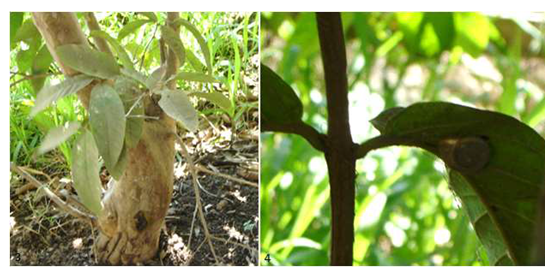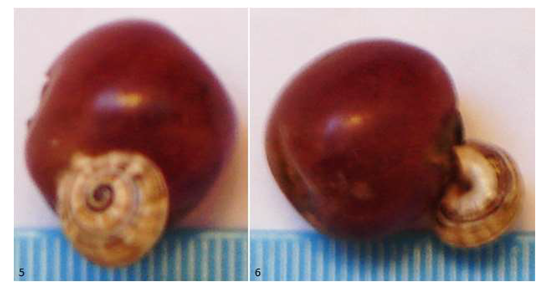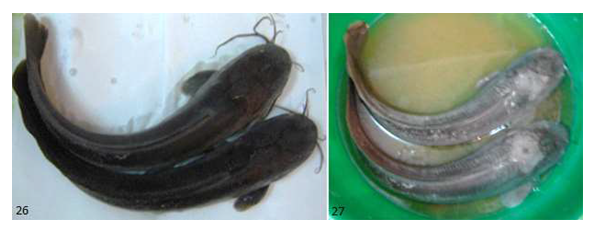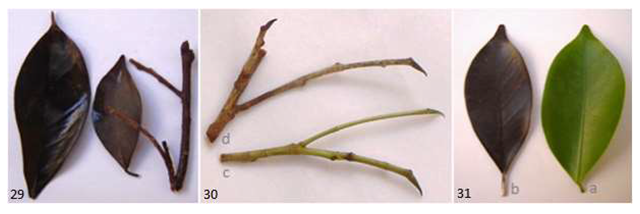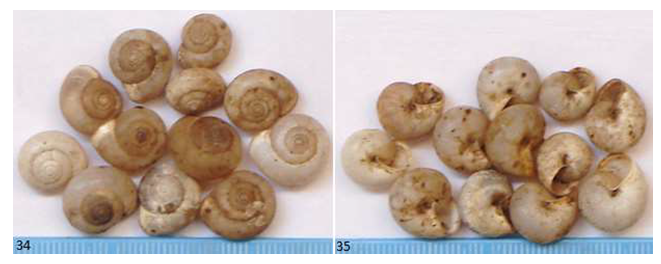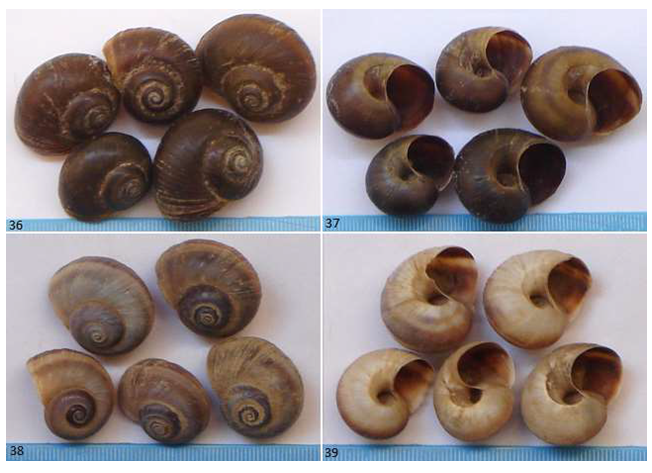-
Paper Information
- Paper Submission
-
Journal Information
- About This Journal
- Editorial Board
- Current Issue
- Archive
- Author Guidelines
- Contact Us
World Environment
p-ISSN: 2163-1573 e-ISSN: 2163-1581
2020; 10(1): 10-15
doi:10.5923/j.env.20201001.02

Evaluation of the Effect of Quicklime on Some Organisms from Different Ecosystems in Egypt: Morphological Perspective
Amina El-Mansy
National Institute of Oceanography & Fisheries, Egypt
Correspondence to: Amina El-Mansy, National Institute of Oceanography & Fisheries, Egypt.
| Email: |  |
Copyright © 2020 The Author(s). Published by Scientific & Academic Publishing.
This work is licensed under the Creative Commons Attribution International License (CC BY).
http://creativecommons.org/licenses/by/4.0/

Quicklime needs wise management decisions before using either in the terrestrial or aquatic environment, especially in fish farms against benthic organisms infected with pathogenic parasites. It has been found that its reaction with water led to water heating, and other disturbances appear to occur. Many health problems have been observed on fish due to lime water. Lime kills snails when it is in a dry state or hydrate, also at high concentrations in addition dangerous to fish. On the other hand, in agriculture, lime water may not be recommended because of its ‘in vitro’ negative effect on the green material of the plant as well. Therefore, it seems better to be away or needs a lot of precautions before applying it specifically as a disinfectant in dense fish farms. It is clear that biological control looks better, perhaps by grazing certain predators. Moreover, to protect the health of workers from invaders, special clothing should be taken seriously during irrigation or fishing as an important preventive measure.
Keywords: Biology, Habitats, Water, Land, Plant, Snail, Fish, Parasite, Quicklime, CaO, Control
Cite this paper: Amina El-Mansy, Evaluation of the Effect of Quicklime on Some Organisms from Different Ecosystems in Egypt: Morphological Perspective, World Environment, Vol. 10 No. 1, 2020, pp. 10-15. doi: 10.5923/j.env.20201001.02.
Article Outline
1. Introduction
- Generally, snails are a nutritional component of many organisms in different environments [1], [2] particularly in aquatic ecosystem (Figs. 1, 2). They may be intermediate host of various parasites for many living organisms such as: fish, birds and humans. Therefore, the wise management is an essential element to eliminate dangerous snails especially with pathogens on a large scale in fish farms. Brown and Gratzek [3], Dupree and Huner [4] stated that “the ponds must expose to sun-rays about half month, especially after draining, weeds must be removed, then spray formalin about 60 to 100 Cm3/m2 this in such of alkaline ponds, but in that of acidic ones calcium oxide (quicklime) is a suitable agent, it is usually added to the bottom and sides of the ponds, at the rate of about 5 Ib to 100 Ft2”.
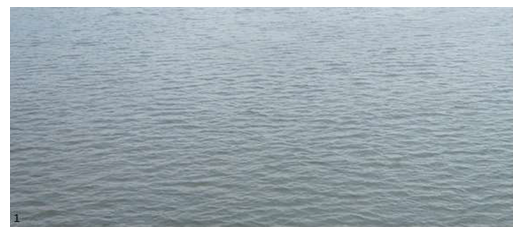 | Figure 1. The Nile River at the city of Qanater, Qalioubia Governorate (March 24, 2019) |
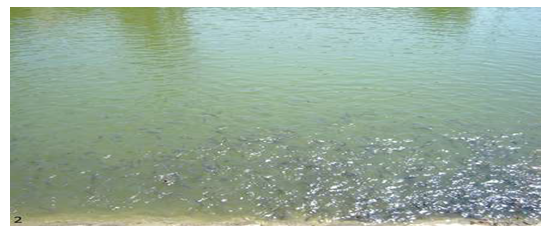 | Figure 2. Freshwater fish in a rearing pond at the farm of El-Qanater El-Khairia Research Station, 2018 |
2. Materials and Methods
- In September 2018, about 59 samples of the wild snail and on October 4, 2018, many similar snails were collected from a small-scale garden near a navigation canal of agricultural land. They were found under some herbs and around the roots of some fruit trees with the other attached to a leaf of the tree in the village of Nawasa El-Gheit, Aga, Daqahlia Governorate. Also, in November 2018, about 69 similar snails were collected including two different shells possibly aquatic snails. Some snails have been photographed (Figs. 3, 4, 7-18). Until a certain period, some live snails were placed in a clean transparent jar with a perforated lid. Sixteen samples of the current land snail were measured length 0.9-1.4 cm (mean 1.225) and 0.8-1.2 cm in width (mean 1). For experiments, a reaction of 20-25 g of quicklime (CaO) with different amounts of de- chlorinated water led to slaked lime and then lime water ‘supernatant’ which was practically used. In October, November 2018, underwent experiments with investigations, especially to show the effect of dry quicklime and lime water on the vitality of the land snail, catfish, and ‘in vitro’ parts of the ficus tree. In addition, on July 8, 2019 from a market in Marioutia, Haram, Giza Governorate, different sample of a land gastropod ‘length of about 0.9 cm and 0.7 cm in width’ was observed on one of the grape fruit (Figs. 5, 6).
 | Figure 13-15. For short time in a little amount of de-chlorinated water, the land gastropod flourished and escaped out |
 | Figure 16,17. The land gastropod is a mollusk breathes air, x10 |
 | Figure 18. Others probably belong to aquatic mollusks that may be loaded with water during irrigation, x10 |
 | Figure 19. Photomicrograph of an aquatic organism noticed free movable in droplets of water contained live samples of the land snail, possibly a stage of an unknown parasite (September 19, 2018) |
3. Results
3.1. The Effect of Calcium Oxide on a Land Gastropod (Figs. 20-25)
- Snails died after 3-5 days when placed with some de-chlorinated water in a jar. Also, they all died after about 5 days of exposure to some calcium oxide and lime water. Severe degeneration was observed especially after snails were exposed to a quantity of quicklime.
3.2. The Effect of Calcium Oxide on the Catfish Clarias gariepinus
- Experimentally, the catfish was exposed twice to different doses ‘100-150 g and 20-25 g’ of quicklime at room temperature in autumn 2018.The catfish appeared with severe irritation, jumped out of the treated water and lost its ability to live, after about two hours of placing in 100-150 g of dry quicklime mixed with 5-7 Liter of tap water. Significant skin erosion and 100% mortality were observed. At this dosage, hydrated lime seems to be caused sudden choking of the fish.In October 2018, the catfish was exposed to 20-25 g of quicklime dissolved in about 21 liter of tap water. Lesions such as: skin damage, inflammation, necrosis, erosion, ulceration and degeneration were observed; after about 12 hours the severe irritated fish jumped out of the treated water and all fish were died. Post death, samples were placed with some water contained quicklime. After about 24 hours, the corpse was stiff with parts of the skin free of epithelium.Probably, a huge amount of oxygen has been reduced during the reaction of quicklime with water causing severe macroscopic lesions and deaths under inappropriate conditions (Figs. 26, 27).
3.3. The Effect of Calcium Oxide on Some Parts of the Ficus Tree (Figs. 28-31)
- On September 27, 2018, all green leaf samples from the ficus tree ‘in vitro’ were dried after about 5 days. At the same time, the drought also occurred to some of the tree parts (leaf, twig and branch) which were treated with a quantity of calcium oxide. This means that quicklime does not affect plant safety.On November 18, 2018, some ficus leaves embedded in dry quicklime, while others placed in water lime ‘calcium oxide mixed with de-chlorinated water’. As a control, some other leaves immersed only in some de-chlorinated water. After about 2 weeks, the leaves of lime mixed with water lost its greenish color ‘chlorophyll’ that completely disappeared but they were still soft ‘watery’. However, control leaves were still normal but other leaves treated only with dry quicklime looked completely dried similar to the control leaves. This means that after at least about two weeks, only when calcium oxide mixed with water affected particularly on the green material of the plant ‘color remover’.On December 10, 2018, some leaves with its branch were placed in de-chlorinated water. In vitro after about one month, they completely lost the green color but still soft. This means that lime water accelerates the loss of the green matter of the plant, while flexibility remains for both.
4. Discussion
- Here, it may be worth to mention that, in August 2018 about 47 live samples of the land snail were collected, 22 of them were placed in 20-25 g calcium carbonate dissolved by about 250 ml water. The rest snails were used as control. All snails died in both calcium carbonate and control after about three days. Mortality may be caused by stress due to its presence outside the natural environment. So, calcium carbonate did not affect the vitality of the land snail, it may be a component of the hard shell. On the other hand, Al Ghaban et al. [5] stated that “incorporation of micro CaCO3 and micro SiO2 particles lead to increase the packing and enhance the mechanical properties and durability of concrete”.Apparently, quicklime needs a lot of precautions before using. The reaction of CaO with H2O may cause water heating. Fomina et al. [6] stated that “it is found highly exothermic reactions occur at temperatures up to 190°C when slaking of highly active lime with water-solid ratio close to the theoretical value. When increasing of water amounts the slaking temperature is reduced”.In the current study, quicklime kills snails when it is in a dry state or hydrate and also risky to fish. Serious health problems and death of catfish due to lime water were observed. Therefore, care must be taken before using it as an antiseptic after drainage to eliminate infected snails. Before supplying the next water and fish, all quicklime should be completely removed from the pond by some water several times.In agriculture, although Tugbobo et al. [7] stated that “arsenic-induced lipid peroxidation is a potential threat and could possibly be salvaged by lime in growing rice plants”. Lime water may not be recommended because of its 'in vitro' negative effect on the plant’s green matter as well. Thus, lime water seems better to be away or needs a scientific management decision before applying it especially in fish farms.Obviously, the biological control seems to be a favorite. Perhaps by some predators such as: catfish and certain birds for an example: a friend of the farmer (Figs. 32, 33). Also, grazing may be more better by certain others, especially of those have many benefits in particular during irrigation and/ or before planting.
 | Figure 32,33. During the irrigation of a field in the village of Nawasa El-Gheit, pictures appear the bird that called farmer friend (October 4, 2018) |
5. Conclusions
- It seems here that snails and catfish have died with quicklime and lime water. The interaction of quicklime with water may led to water heating with other stresses that negatively affected both. Thus, calcium oxide causes serious injuries, may be also because it covers their airways. Obviously, hypoxia in particular when using a high dose of quicklime causes severe damage and loss of life. Also, lime water has a negative effect not only on the health of snails and fish but also led to death may be due to suffocation.Microscopically, a small amount of water with live samples of wild snail was free of parasites. Only three specimens of unknown parasitic stage (Fig. 19) were noticed alive in water droplets, possibly released from the terrestrial snail. In addition, infectious stages of aquatic parasites, such as schistosomiasis may be transmitted to humans during irrigation. In shaa Allah, further study of snails and/ or water parasites, especially in the absence of appropriate precautions has recommended.Overall, herein the land gastropod has its own awareness. In favorable conditions it appears active and has a sense against the abnormal factors through rapid entry into the shell. In addition, land snail cannot tolerate its presence in the water for a long time, often escaped to breathe air. Then again, compare with the shell of land and aquatic snails. With extreme fatigue, the animal may die leaving empty shell with some color change, probably after prolonged exposure to sun’s heat (Figs. 34, 35). Similar observations emerged on aquatic snails that removed from the water 'natural environment' (Figs. 36-39). Substantially, after the death of the gastropod 'with unfavorable conditions especially drought due to high temperature', shells of land and aquatic snails appeared non-vital.It is clear that mollusks have unique properties suitable for living on land or in water. Distinctly, wild snails have a respiratory system that is only suitable for breathing air on the ground. Finally, the land snail that was created by Allah (God) is a wild creature from the beginning, and Allah knows best.
ACKNOWLEDGEMENTS
- Alhamd Llah, Prayer and peace upon the messenger of Allah our master Mohammad salla Allah alaihe wa sallam. Praise be to Allah Lord of the worlds. La Ilah illa Allah.
 Abstract
Abstract Reference
Reference Full-Text PDF
Full-Text PDF Full-text HTML
Full-text HTML